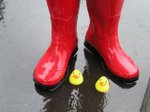
1) In 2006, the prolific Margaret Atwood has released three books: The Penelopiad which reworks the Ulysses myth from Penelope's point of view; The Tent, a collection of fable-like stories and poems; and Moral Disorder, a collection of connected short stories. I've read them all. They were all excellent. Most people are lucky to publish three good books in a lifetime.
2) Last night, as we were lying in bed, I read my husband the story "Moral Disorder" from the book of the same name. My husband and I don't usually read to one another; we're just not that way inclined. Originally, I just wanted to read him a passage from the story but I couldn't stop and he didn't want me to, and by the end of the story we were laughing so hard, we were crying. The best bit was the haunted peacock. This is Margaret Atwood. Remember Margaret Atwood- the dark, bleak, feminist man-hater (as you no doubt learned when you read Handmaid's Tale at school?) Margaret Atwood is a first class comedian.
3) At the end of her story "The Entities", Margaret Atwood writes, "But what else could I do with all that? thinks Nell, wending her way back to her own house. All that anxiety and anger, those dubious good intentions, those tangled lives, that blood. I can tell about it or I can bury it. In the end, we'll all become stories. Or else we'll become entities. Maybe it's the same." I cite this passage, as Moral Disorder has been remarked on profusely for being quite autobiographical in its content, and herein lies the clue. I don't see this book as autobiographical, but it is clear thoughout Atwood's oeuvre that she mines her own life for stuff. Not her own experiences particularly, although they do appear, but more objects and settings. Having just read Cat's Eye, Moral Disorder, and now rereading Lady Oracle, this is quite apparent. And I think it's really fascinating to understand the different ways authors use their own lives in their work, and rather than supplying us with the story of Atwood, Moral Disorder provides insight into this process.
4) In addition, I don't think a story such as "Moral Disorder" could have been written unless it came from some experience, or combination of experience. That sort of story is too absurd to be imagined, and could only be captured by someone who has lived through it. I'm just guessing.
5) I think Moral Disorder is essentially a novel. The stories all could stand alone (and they do-- I'd read two in previous Toronto Life Fiction Issues) but the links are essential, a chronology is present. This book is a novel in the way that Lives of Girls and Women is a novel, though I think as a novel Atwood's book actually works better.
6) I have written this entry as a list, to reflect my confusion about short story collections and how they should be reviewed. I could treat this book like the novel I believe it is, and sum up the narrative trajectory, but somehow that feels cheap. And my automatic response to this work was indeed rent and chaptered, as you can see. So it's not completely a novel, but I stress its novel-like tendencies so those of you who dislike short story collections will not be put off this most excellent reading experience.
7) I could say this. Some short stories are not meant for collection, and might be happier wandering free. The stories in Moral Disorder, on the other hand, belong together. They centre around a character called Nell, and begin with the story "Bad News" in a present day, which takes a page from The Tent in form and content, I thought. From the second story, we return to Nell's childhood and the stories continue in first-person until about half-way through when I becomes Nell (and her house is possessed by a lovesick peacock). She grows up, falls in love, struggles with the realities of modern love ala David Bowie (well, no David Bowie but you know, it's the seventies). The last two stories of the collection beautifully deal with the decline of Nell's parents and her relationships with them, and contribute to the circular structure of this collection. A fascinating dynamic is apparent, as Nell is caring for the ailing parents and their roles are reversed, and yet she is more a child than she ever was, because this is how they know and remember her.
8) This was a deeply satisfying book.

